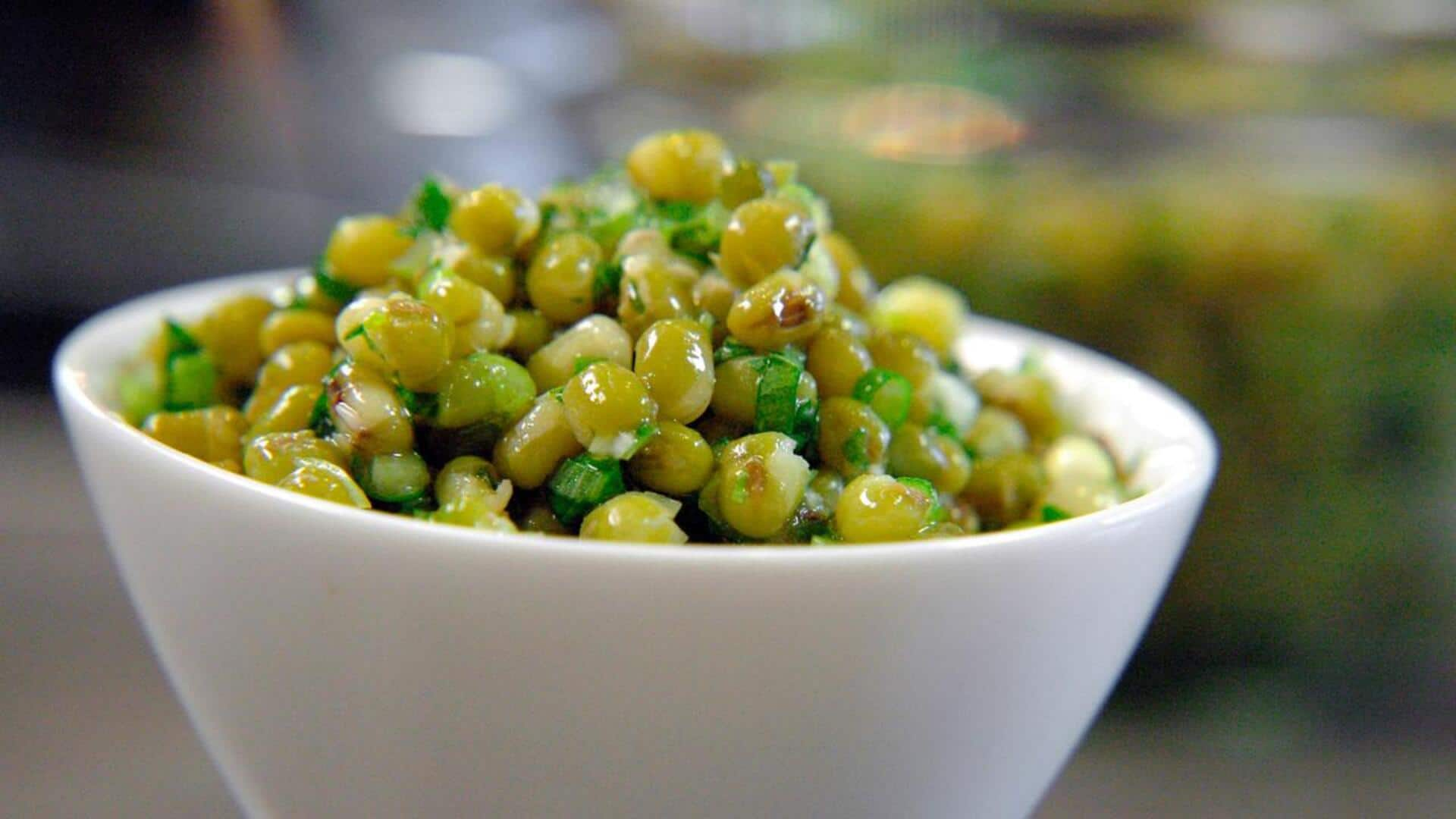
Love mung beans? You'll enjoy these dishes
What's the story
Sprouted mung beans are a versatile ingredient that can be used in various dishes. They are packed with protein, fiber, and essential nutrients, making them a great choice for those wanting to eat more plant-based foods. Here are five flavorful dishes that showcase sprouted mung beans' unique taste and texture, giving you something from salads to savory pancakes.
Fresh mix
Mung bean salad with fresh vegetables
A refreshing mung bean salad combines sprouted mung beans with fresh veggies like cucumber, tomato, and bell pepper. Dressed with lemon juice, olive oil, salt, and pepper, the salad is often dressed for added flavor. Not only is this dish easy to prepare, but it's also packed with vitamins and minerals. It makes for a perfect light meal or side dish that can be enjoyed anytime.
Quick sauté
Spicy mung bean stir-fry
A spicy mung bean stir-fry makes for a delectable medley of flavors by cooking sprouted mung beans with spices like cumin, turmeric, and chili powder. The onions and garlic give it a nice aroma and also add depth to the dish. This stir-fry can be eaten on its own as a main course or with rice or flatbread for a wholesome meal.
Crispy delight
Savory mung bean pancakes
Savory mung bean pancakes are prepared by blending sprouted mung beans into a batter with spices like ginger and green chilies. The pancakes are cooked on a skillet till golden brown on both sides. They can be an excellent breakfast option or a snack when served hot with chutney or yogurt.
Warm comfort
Mung bean soup with herbs
Mung bean soup is another comforting dish that marries sprouted mung beans with herbs like cilantro and mint for a punch of freshness. The soup is usually seasoned with salt, pepper, and lemon juice for flavor. It keeps you warm during winter months but is light enough to be enjoyed all year round.
Cooking tips
Tips for cooking sprouted mung beans
When cooking with sprouted mung beans, remember to rinse them thoroughly before use to remove any impurities. Soaking them briefly in some water helps soften their texture, if you want. However, they don't need the long soak of dried legumes as they're already softened from the sprouting process. This makes them quicker to cook than any other legume option available today.